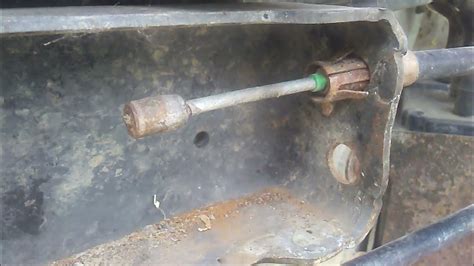How to Disconnect Your Emergency Brake Cable in an Emergency: A Last Resort Guide
This guide details how to disconnect your emergency brake cable in a true emergency situation. This is a last resort option and should only be attempted if your vehicle is in immediate danger, such as a fire or flood, and disconnecting the cable is the only way to escape. Improperly disconnecting the emergency brake cable can damage your vehicle and potentially create additional hazards. Always prioritize your safety and, if possible, call for professional assistance.
Why Would I Need to Disconnect My Emergency Brake Cable?
Typically, your emergency brake is a vital safety feature. However, catastrophic events can render it a hindrance. Situations where disconnecting the cable might be necessary include:
- Vehicle Fire: If a fire starts near or under your vehicle, the emergency brake could prevent you from quickly escaping.
- Flooding: If your vehicle is submerged in rising water, the engaged emergency brake might prevent you from driving away to safety.
- Mechanical Failure: In extremely rare instances, a mechanical failure might prevent you from releasing the emergency brake, trapping you inside.
What Tools Might I Need?
The tools required vary depending on your vehicle's make and model. However, in many cases, you might only need:
- A sturdy pair of pliers: These will be used to manipulate the cable and its connecting components.
How to Disconnect Your Emergency Brake Cable (General Steps)
Warning: This is a generalized guide. The exact location and method of disconnecting your emergency brake cable vary significantly between vehicles. Consult your vehicle's owner's manual for specific instructions. Attempting this without understanding your vehicle's system is highly discouraged.
- Assess the Situation: Ensure disconnecting the emergency brake is absolutely necessary. Call emergency services if possible.
- Locate the Cable: The emergency brake cable typically runs from the handle inside your vehicle, under the floorboard, and connects to the rear brake system. The exact routing depends on your vehicle's design. Locate the connection point closest to the rear brakes—this is often a lever or clamp.
- Engage the Safety Mechanisms: If your vehicle has any locking mechanisms or safety pins related to the emergency brake cable, disengage them carefully.
- Disconnect the Cable: Using the pliers, carefully manipulate the cable’s connection point. This may involve releasing a clamp, lever, or other similar mechanism. You're aiming to separate the cable from the braking mechanism, allowing the wheels to freely rotate.
- Check the Brakes: Once the cable is disconnected, carefully attempt to move your vehicle. Ensure the emergency brake is no longer engaging.
What to Do After Disconnecting the Cable
- Seek Professional Help: Once you are safe, take your vehicle to a qualified mechanic to have the emergency brake system inspected and repaired. Driving with a disconnected emergency brake is dangerous and illegal.
- Report the Incident: Depending on the cause of the emergency, you may need to report the incident to your insurance company or the relevant authorities.
Safety Precautions
- Always prioritize your safety: If you are unsure about any step, do not proceed. Call for professional assistance.
- Wear appropriate safety gear: Consider wearing gloves and eye protection.
- Work in a well-lit area: Adequate lighting is crucial for accurate manipulation of the cable and its components.
- Avoid unnecessary force: Excessive force can damage the cable or other components.
H2: What if I can't find the cable?
If you can't locate the emergency brake cable connection point, do not attempt to force anything. Your vehicle's manual should show a diagram of the braking system, including the emergency brake cable. If the situation is truly dire and you cannot safely exit the vehicle any other way, then consider calling emergency services and explaining your situation. Professionals may have specialized equipment to assist in the situation.
H2: Is it illegal to drive with a disconnected emergency brake?
Yes, driving with a disconnected emergency brake is generally illegal. Your emergency brake is a critical safety feature, and driving without it significantly compromises your ability to stop your vehicle safely, particularly in emergencies. Additionally, operating a vehicle with a malfunctioning safety device could result in fines or penalties. It's vital to have the system repaired as soon as possible.
This guide provides general information. Always consult your vehicle's owner's manual for specific instructions and seek professional assistance whenever possible. Remember, disconnecting your emergency brake cable should only be a last resort in a life-threatening emergency.

